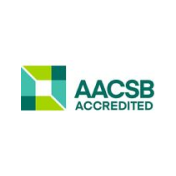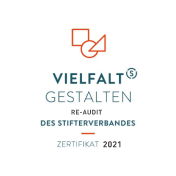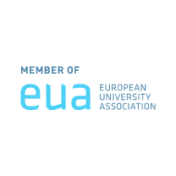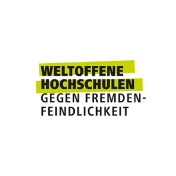Biomaterials and Biophysics
Research activities Kemkemer-Lab
Current research projects are focussing on topics of
- Cell Migration of Tumor Cells and others
- Cell fragments - motility principles and application as autonomous carrier
- Cell-Material Interaction - Development of Biomaterial Interfaces
Funding is acknowledged from BMBF, State of Baden-Württemberg, Baden-Württemberg Stiftung, DAAD, Stifterverband der Deutschen Wirtschaft, Vector Stiftung (Stuttgart), and others.
Research projects
Subproject: Epithelial In-vitro Model for Testing Adhesion and Biocompatibility of Functionalized Hearing Implant Surfaces
As part of a larger project aiming to develop an electroactive, film-like "hearing lens" for the tympanic membrane, the TYMP-CONTACT subproject focuses on the biological interface between implant and tissue. The goal is to optimize the surface of the piezoelectric implant so that it can form a stable and biocompatible long-term contact with the human eardrum.
To achieve this, cell-based in-vitro models of the outer and inner tympanic membrane surfaces are being developed. These models allow controlled testing of new material surfaces under physiologically relevant conditions. In addition to evaluating biocompatibility, micromechanical measurements are used to quantify adhesion forces between epithelial tissue and implant surfaces. The model not only contributes to targeted material optimization, but also supports the reduction of animal testing in line with the 3R principles (Replace, Reduce, Refine).
The project is funded by the Carl Zeiss Foundation.
The aim is to develop and validate biomolecular carrier machines from human immune cell fragments for targeted drug delivery to therapy-resistant tumours. This project is funded by the Baden-Württemberg Ministry of Science, Research and the Arts (MWK) as part of the ‘Innovative Projects 2025’ call for proposals with a total of 203,425.00 euros. The project will run from October 2025 to September 2027.
Biomimetic immune cell fragments as intelligent drug carriers for targeted tumour therapy (CYTO-CARRIER) The targeted and local administration of drugs is crucial for improving the treatment of solid tumours. Biological or biomimetic drug carriers are increasingly attracting attention for such applications. Against this background, the project is investigating how novel, robust biomolecular carrier machines can be constructed and manufactured from human immune cell fragments in order to transport therapeutic agents embedded in hydrogels to treatment-resistant tumours, such as pancreatic ductal adenocarcinoma (PDAC). The project pursues an innovative approach to intelligent drug delivery using a biological transporter and is of medical relevance. Autonomously moving small cell fragments are to be obtained from human immune cells (neutrophil granulocytes, polymorphonuclear neutrophils, PMNs) and their suitability as transport vehicles for anti-tumour agents validated. PMN fragments, known as cytokine plastids (CKPs), exhibit chemotaxis and can infiltrate tissue and tumours in a similar way to PMNs. Despite these promising properties, there is very little research on CKPs and, to date, no use as drug carriers.
In our view, two important research questions must therefore be addressed: Research question A (reproducibility and scaling): How can the production of functional cytokine plastics (CKPs) from human immune cells be standardised and scaled to enable reproducible and quantitative provision as a carrier unit for therapeutic applications? Research question B (loading and drug release): Which physical and biological parameters control the efficient loading of CKPs with therapeutic agents – and how can targeted, controlled release in tumour tissue be optimised? The project partner is Ulm University Hospital (Dr Tim Eiseler).
Key points of the research project
Persons involved: Prof. Dr. Ralf Kemkemer
Duration: 01.10.2025 – 30.09.2027
Budget/funding amount: 203.425,00 EURO
Funded by: MWK - Innovative Projekte 2025
In the BMBF-funded PolyAntibak research project, novel antibacterial microcompartments were developed that can be used to coat implant surfaces. Our working groups were responsible for two key areas:
- Krastev-Lab: Development and optimisation of methods for immobilising the microcompartments on solid carrier materials using polyelectrolyte multilayers (PEM).
- Kemkemer-Lab: Investigation of the antimicrobial efficacy of the coated surfaces according to established international test standards.
The aim is to create stable, antibacterially active coatings that can prevent infections on implants. In a later phase of the project, the suitability of PEM coatings for immobilising gold nanoparticles (Au-NP) was also investigated.
Es werden verschiedene Technologien zur Strukturierung und chemischen Modifizierung von Materialoberflächen eingesetzt. Mit zellbiologischen Methoden wird das Verhalten verschiedener Zelltypen untersucht.
Insbesondere interessieren wir uns dafür, wie Zellen Oberflächentopographien wahrnehmen und wie spezifische Oberflächeneigenschaften genutzt werden können, um Zellen in vitro und in vivo zu kontrollieren oder zu manipulieren.
Verbundprojekt: Biomimetische Interpositionsimplantate zur Behandlung von Kniegelenksarthrose (TOKMIS) in Kooperation mit Prof. Dr. Günter Lorenz
Arthrose, ein degenerativer Prozess der Gelenke, ist die weltweit häufigste Gelenkerkrankung. Etwa ein Drittel aller Menschen über 70 Jahre leiden derzeit an Arthrose. Hierbei ist nicht selten das Kniegelenk betroffen. Man unterscheidet eine laterale und mediale Kniegelenksarthrose, wobei mit letzterer eine Manifestation der Arthrose im zur Körpermitte gerichtete Teil des Gelenks bezeichnet wird. Zur Behandlung der medialen Kniegelenksarthrose gibt es verschiedene Möglichkeiten. Diese weisen bisher jedoch geringe Erfolgsraten auf und sind mit aufwendigen Operationen und langen Rehabilitationszeiten verbunden. Hauptziel des Verbunds ist es daher eine neuartige, minimal-invasive Methode zur Behandlung der medialen Kniegelenksarthrose zu entwickeln. Dabei soll ein elastisches Knieimplantat (Kniespacer) mit optimierten Materialeigenschaften und einer patienten-spezifisch angepassten Form entwickelt werden. Zusätzlich soll eine Software zur präoperativen Planung des Eingriffes erstellt werden. Die entwickelten Kniespacer-Prototypen werden auf ihre biologische Verträglichkeit, biomechanische Funktion und Haltbarkeit unter Belastung getestet. Anschließend sollen die optimierten Kniespacer in einer klinischen Pilotstudie getestet werden. Im Verbund TOKMIS arbeiten sieben interdisziplinäre Arbeitsgruppen an der Entwicklung dieses neuen Behandlungskonzepts zur Kniegelenksarthrose.
The aim of this project is the development of a 3D organ-on-a-chip for the application of electric fields to tumor spheroids in hydrogel systems. The system will allow long-term studies (up to weeks) on 3D tumor spheroids and the influence of electric fields on growth (volume development and shape) as established 3D-in-vitro model.
Further, the set-up will be used for studying the tumor spheroid growth depending on electric fields and different hydrogel systems. Experiments will be performed to gain knowledge on the development of tumor spheroids in simple non-adhesive and adhesive hydrogel systems under the influence of electric fields resembling endogenous fields (in vivo situation) to decipher the influence of electric fields on tumor development.
Project funded by HAW-Prom program (Benjamin Naggay).
Die Invasion von Zellen in umliegendes Gewebe und die Bildung von Metastasen transformieren einen lokal wachsenden Tumor in eine systemische und lebensbedrohliche Krankheit mit schlechter Prognose. Dabei spielt die aktive Migration der Tumorzellen eine entscheidende Rolle, ein komplexer Vorgang, der auch von den chemischen und physikalischen Eigenschaften der extrazellulären Umgebung abhängt. Auf Grund der enormen medizinischen Relevanz der Tumorzellinvasion, gibt es mehrere experimentelle Untersuchungsmethoden, die teilweise auch kommerziell erhältlich sind. Allerdings bilden diese Methoden nur bedingt die Komplexität der in vivo Situation ab, bzw. sind limitiert in der definierten Variation von entscheidenden Parametern, wie beispielsweise der mechanischen Steifigkeit oder geometrischen Verengungen in der Umgebung.
Primäres Ziel dieses interdisziplinären Projektes ist die Entwicklung und Herstellung eines neuartigen Mikrofluidic-Chips zur Anwendung in der in vitro Untersuchung der Migration von Tumorzellen.
Aim of the project is the development of a lung-on-chip system as a model for breath analysis with ion mobility spectroscopy. The work ist done in cooperation with the group of Petra Kluger.
The project is funded by the Baden-Württemberg Stiftung.
Funded by the Vector Stiftung.
Cooperation with Dr. Tim Eiseler Universitätsklinikum Ulm.
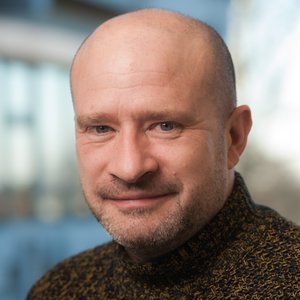
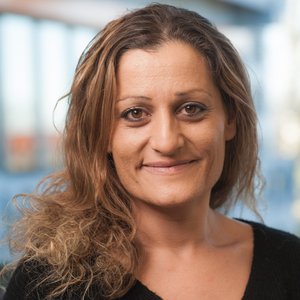
![[Translate to English:] [Translate to English:] Katrin Spindler](/fileadmin/_processed_/7/5/csm_Spindler_18c08df477.jpg)
